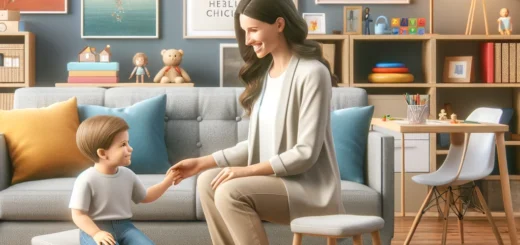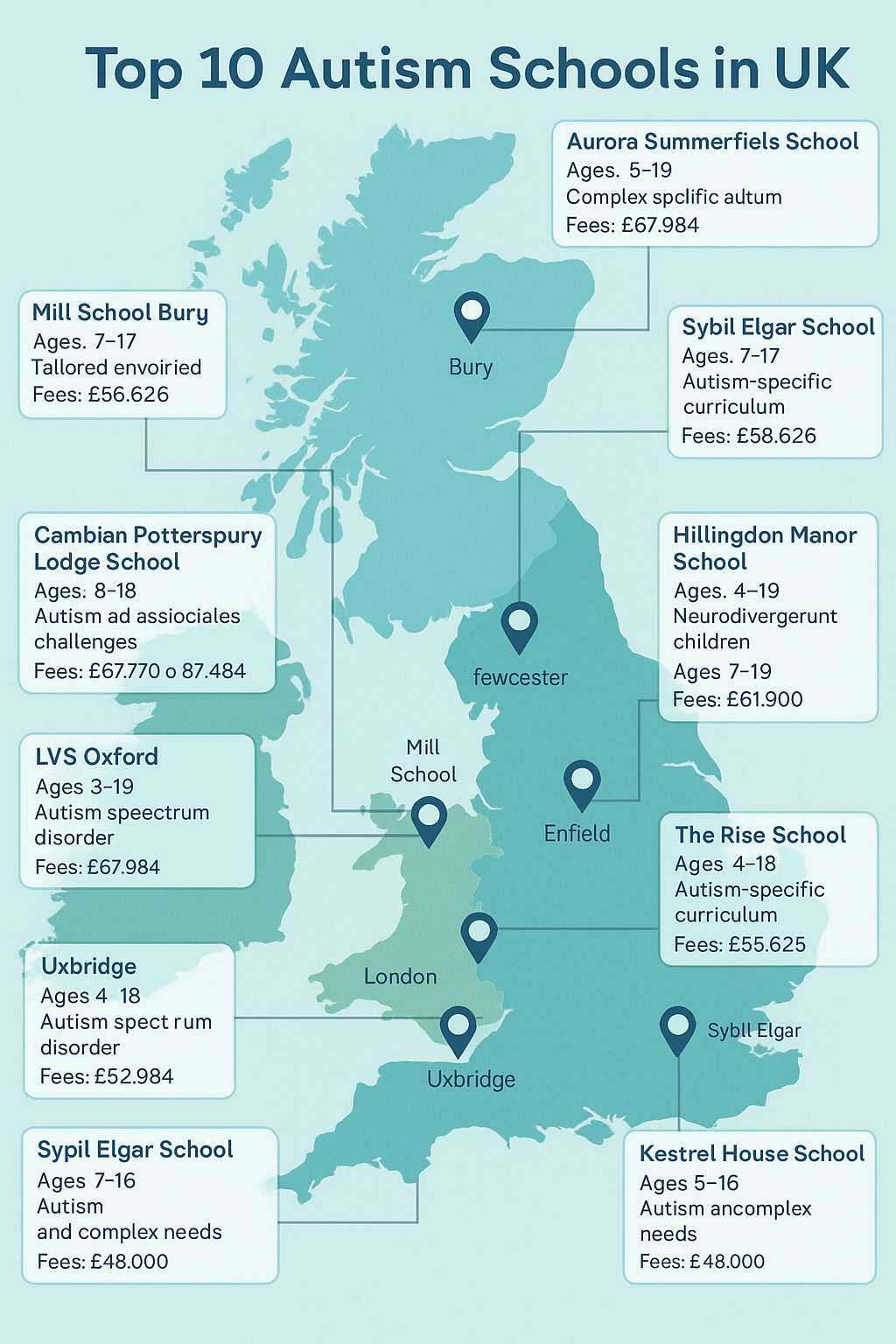The Role of Educational Psychologists in Autism Diagnosis: A Continuation
Introduction
In our previous post, we discussed the role of school psychologists in diagnosing autism. We learned that while they play a crucial role in identifying potential cases of autism, they cannot make a formal diagnosis. Today, we continue our series by focusing on another key player in the educational field: the educational psychologist.
Educational Psychologists and Autism Diagnosis
Educational psychologists, like school psychologists, play a significant role in the lives of children with autism. They are experts in understanding how children learn and develop, and they use this knowledge to help children overcome challenges and succeed in school.
But can an educational psychologist diagnose autism? The answer is yes.
Educational psychologists are trained to identify and diagnose a range of learning and behavioral disorders, including autism. They use various assessment tools and techniques to evaluate a child’s social, emotional, and cognitive development.
However, it’s important to note that while educational psychologists can diagnose autism, they are just one part of a multidisciplinary team. Pediatricians, neurologists, and psychiatrists also play crucial roles in diagnosing and treating autism.
Educational Autism: A Recap
As discussed in our previous posts, educational autism refers to the understanding and approach to autism in an educational context. It involves the strategies, interventions, and supports used in educational settings to help children with autism reach their full potential.
Educational autism is not a particular type of autism but a perspective that focuses on how autism affects a child’s learning and social interactions in school. It emphasizes the importance of individualized education plans (IEPs), specialized teaching strategies, and inclusive classroom environments.
The Role of a Psychologist in Spectrum Disorder
A. Psychologists play a crucial role in assessing, diagnosing, and treating individuals with Autism Spectrum Disorder (ASD). They provide valuable insights into understanding the cognitive, emotional, and behavioral aspects of autism and are an integral part of a multidisciplinary team.
Here are some key roles and contributions of psychologists in the context of autism:
Diagnostic Assessment: Psychologists conduct comprehensive evaluations and assessments to determine if an individual meets the criteria for an ASD diagnosis. They use standardized measures, observations, interviews, and behavioral assessments to gather information about the individual’s development, social interactions, language skills, and repetitive behaviors.
Psychological Support: Psychologists offer psychological support to individuals with ASD and their families. They provide counseling, guidance, and coping strategies to help manage the challenges individuals with ASD may face, such as anxiety, social difficulties, and sensory sensitivities. They also assist families in understanding and navigating the complex emotions and dynamics related to autism.
Behavioral Interventions: Psychologists develop and implement evidence-based behavior intervention plans tailored to the unique needs of individuals with ASD. These interventions focus on improving social skills, communication, adaptive behavior, and reducing challenging behaviors. Psychologists collaborate closely with educators, parents, and other professionals to ensure consistency and effectiveness of interventions.
Cognitive and Emotional Assessment: Psychologists assess individuals’ cognitive abilities and emotional well-being with ASD. They evaluate intellectual functioning, language skills, executive functioning, and the presence of comorbid conditions, such as anxiety or depression. This information helps psychologists develop appropriate strategies and interventions to support the individual’s cognitive and emotional development.
Research and Advocacy: Psychologists contribute to the growing body of research on autism by conducting studies, analyzing data, and publishing findings. They advocate for evidence-based practices and policies that promote inclusion, acceptance, and support for individuals with ASD. Psychologists also play a vital role in raising awareness about autism and reducing stigmatization.
It’s important to note that psychologists’ specific roles and responsibilities may vary depending on their specialization, expertise, and the specific needs of the individual with ASD. Collaborating with other professionals, such as pediatricians, speech-language pathologists, and occupational therapists, is crucial in providing comprehensive care for individuals with autism.
Ensuring early diagnosis, personalized
What is the role of the educational psychologist?
The role of an educational psychologist is to support children’s learning and development in an educational context. They are experts in understanding how children learn and develop and use this knowledge to help children overcome challenges and succeed in school. Here are some key aspects of their role:
Assessment and Diagnosis: Educational psychologists use various assessment tools and techniques to evaluate a child’s social, emotional, and cognitive development. They can identify and diagnose a range of learning and behavioral disorders, including autism, and provide recommendations for interventions and support.
Intervention and Support: Educational psychologists work closely with teachers, parents, and other professionals to develop and implement individualized education plans (IEPs) and interventions to meet the specific needs of children. They provide strategies, interventions, and support to improve academic performance, social skills, and emotional well-being.
Collaboration and Consultation: Educational psychologists collaborate with teachers, parents, and other professionals to create inclusive classroom environments that meet the diverse needs of all students. They provide consultation and guidance on behavior management, learning difficulties, and special education services.
Educational Planning: Educational psychologists assist in developing and implementing educational programs and policies. They provide insights and recommendations on curriculum development, school-wide interventions, and best practices in teaching and learning.
Research and Evaluation: Educational psychologists contribute to growing child development and education research. They conduct studies, analyze data, and evaluate the effectiveness of interventions and programs. Their research findings inform evidence-based practices and policies in education.
Educational psychologists promote inclusive education, support children with diverse learning needs, and facilitate their educational and social-emotional development.
What types of professionals typically give the autism diagnosis?
A multidisciplinary team typically makes the diagnosis of autism of professionals. The following professionals are often involved in the diagnostic process:
Pediatricians: Pediatricians are often the first point of contact for parents who suspect their child may have autism. They conduct initial screenings and refer children to specialists for further evaluation.
Child Psychiatrists are medical doctors specializing in diagnosing and treating mental health conditions. They may be involved in the diagnosis of autism, especially when there are comorbid mental health conditions present.
Developmental Pediatricians: Developmental pediatricians are medical doctors who specialize in evaluating and managing developmental and behavioral concerns in children. They have expertise in diagnosing autism and other developmental disorders.
Clinical Psychologists: Clinical psychologists are trained in assessing and diagnosing various mental health conditions, including autism. They use standardized assessments, interviews, and other evaluation tools to gather information and make a diagnosis.
Neuropsychologists: Neuropsychologists evaluate
how cognitive processes (such as memory, attention, and problem-solving) are related to brain functioning. They may be involved in diagnosing autism better to understand an individual’s cognitive strengths and weaknesses..
Speech-Language Pathologists: Speech-language pathologists assess and treat communication disorders. They play a crucial role in diagnosing autism, as language and communication difficulties are common in individuals with autism.
Occupational Therapists: Occupational therapists evaluate and address difficulties with everyday tasks and sensory processing. They can contribute valuable information to the diagnostic process, especially regarding sensory sensitivities and motor skills.
Educational Psychologists: As mentioned in the previous content, educational psychologists can also be involved in diagnosing autism. They assess a child’s learning and behavioral difficulties within an academic context and provide valuable insights.
It’s important to note that the specific professionals involved in the diagnosis may vary depending on the healthcare system, location, and individual circumstances. Collaboration and communication between these professionals are key to ensuring a comprehensive and accurate diagnosis of autism.
What is an educational diagnosis of autism?
An educational diagnosis of autism refers to evaluating and identifying how autism impacts a child’s learning and educational needs. It focuses on understanding the unique strengths and challenges individuals with autism may experience in an educational setting.
The educational diagnosis involves assessing various aspects of a child’s development, including social skills, communication abilities, sensory processing, cognitive functioning, and academic performance. Educational psychologists and other professionals, such as speech-language pathologists and occupational therapists, use standardized assessments, observations, interviews, and behavioral evaluations to gather information and make informed decisions about a child’s educational needs.
An educational diagnosis aims to develop an individualized educational plan (IEP) that addresses the specific learning requirements of a child with autism. The IEP includes tailored strategies, interventions, and accommodations to support the child’s academic progress, social interactions, and overall educational success.
Furthermore, an educational diagnosis of autism considers creating an inclusive learning environment that promotes the inclusion and acceptance of students with autism. It emphasizes the collaboration between educators, parents, and other professionals to ensure that the child’s educational needs are met and their strengths are nurtured.
It’s important to note that an educational diagnosis of autism is just one part of a comprehensive approach to supporting individuals with autism. A medical diagnosis made by professionals such as pediatricians or clinical psychologists is essential for receiving appropriate healthcare and therapeutic interventions.
Conclusion
Understanding the role of educational psychologists in diagnosing autism is crucial for educators, parents, and anyone involved in caring for a child with autism. Their expertise in child development and learning processes allows them to identify autism and provide recommendations for educational interventions.
Remember, early diagnosis and intervention are key to helping children with autism thrive. If you suspect your child may have autism, don’t hesitate to contact an educational psychologist or other healthcare professional.
In our next post, we will delve deeper into the strategies and interventions used in educational autism. Stay tuned!



1 Response
[…] is crucial to note that while school psychologists can perform initial screenings and contribute significantly to a multidisciplinary assessment, they […]